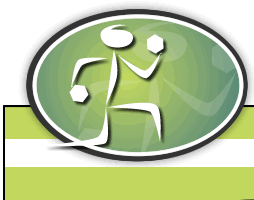ACSM crammer!
by Madison
(Arkansas)
Just passed the exam on the first try with a 643! A little background- I have a BSE in Kinesiology with an emphasis in Exercise Physiology and Biomechanics. I was NOT prepared for the exam like I should have been- I graduated college a year ago and didn't start studying until probably three days ago. I wouldn't recommend this, if it wasn't for my strong background in Kinesiology I would NOT have passed this exam.
To pass I used the KSA guidelines for the exercise physiology and biomechanics portion because, ironically, that is the part that is the most difficult for me. For the remainder of my studying I used tips that other people posted on this website and I also mapped out EVERYTHING I would do for a new client- from the initial contact with them all the way to how I would progress through a full program. THIS WAS VERY HELPFUL- there are a ton of questions on exercise programming and knowing what you would do in a client situation makes it easy to answer these.
STUDYING TIPS:
-don't focus on anatomy. Make sure you know your general muscles (hamstrings, quads, soleus, illiopsoas, triceps, biceps, etc), but there are NO specific questions on anatomy in terms of the small muscles or bones.
-know examples of uniaxial joints
-know which joint has the largest range of motion
-know your vertebral column order (cervical, thoracic, lumbar, sacral, coccyx)
-know breathing muscles (inspiration: diaphragm and external intercostals, expiration: abdominals and internal intercostals)
-KNOW YOUR RISK FACTORS INSIDE AND OUT- every one of them. you WILL have to risk stratify case studies
-KNOW YOUR RISK STRATIFICATION GUIDELINES
-read the whole chapter on negligence issues- there are a lot of questions on this
-know consent forms and what they explain
-know the sequence of the first meeting with your client- medical history, risk assessment, fitness test, evaluate results, exercise prescription
-know blood flow in heart (RA-RV-LA-LV)
-know that LV is what delivers oxygenated blood back to body
-know what your mitral (bicuspid) valve is for
-know what the tricuspid valve is for... i think that is all on the heart
-know the difference in cardiac and skeletal muscle- particularly that skeletal muscle involves the nervous system and cardiac muscle is automated
-valsalva maneuver- i think this must be one of the un-graded questions because this isn't in the certification review book but basically know the effect it has on HR and BP
-know the effects of CV exercise on EVERYTHING- HR, BP, SV, Q (lowers resting HR, lowers resting BP, raises SV, Q the same)
-know the muscles of the rotator cuff and all of their functions- SITS (supraspinatus: abduction of arm, infraspinatus and teres minor: external rotation, subscapularis: internal rotation)
-know exercise induced asthma- they have a WEIRD question on this that says "what conditions irritation EIA patients" and they give dry air, warm air, pollutants, and dust... idk the answer, i read that all of those effect EIA
-know what bronchodialators do
-know how to convert VO2 to METS (divide VO2 by 3.5)
-I feel like there was a LOT on nutrition... know how to get body fat and lean muscle based on a weight, know that 3500 kcal=1 lb fat, know 65% diet should be carbs for active adults, know that no more than 35% of your diet should be fat, know the calorie levels for fat (9 kcal/g), protein and carbs (4 kcal/g). know what happens when your body takes in too much protein- know this in detail.
-know the running mechanism- eccentric contraction involves quads
-know plyometrics
-periodization
-isotonic, isometric, isokinetic
-know human behavior- i think there were a lot of questions on this, more than i expected. I can't remember what though...
-resistance training- know all the principles
-know what SAID is... because i didn't hahaha
-know that DHEA is made by the body and is considered a controlled substance by the FDA now
-know what IDEA is... because once again i didn't
-know the functional unit of muscle (i think it was sarcromere???)
-the only metabolic equations you need to know are:
HR reserve= HRmax-HRrest
Training HR= % your want to train at (HRR) + HRrest
these are interchangeable with VO2 values as well
-know conversions 2.2lb/1 kg, 2.54 cm/inch
-know how to get BMI
okay i'm spent. GOOD LUCK!
Click here to post comments
Join in and write your own page! It's easy to do. How? Simply click here to return to ACSM Exam Tips.
|



